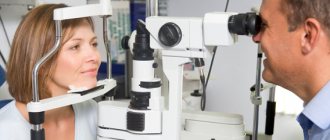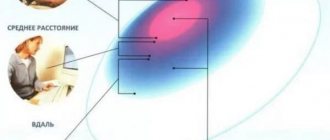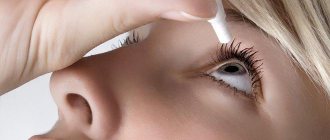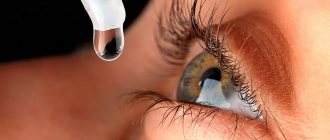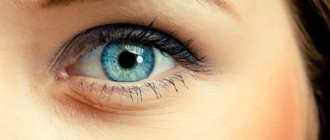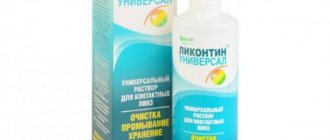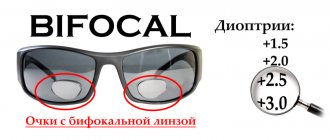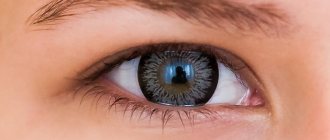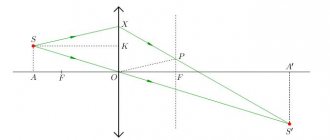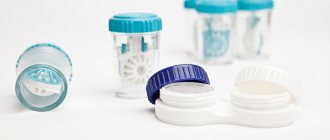Many people use corrective optical products every day, which require certain storage and operating conditions. There are situations when there is no special medical disinfectant base at hand.
Then the question arises, what to do if you run out of lens solution. There are many options for replacing it. But, it is important to wisely select means for storing optical instruments, so as not to harm not only their condition, but also your eyes in the first place.
Why do we need special solutions for CL?
If you don’t need to take care of “one-day” lenses, then traditional or planned replacement contact lenses with a wear period of more than 1 day require high-quality cleaning and disinfection. For patients who are encountering long-term wearing of contact optics for the first time, the mere mention of special means causes aversion. It is believed that these are always additional problems and some inconveniences at the everyday level. But, experienced patients are familiar with the situation when a lens that has been without life-giving moisture for some time, having dried out, turns into a fragile accessory that has lost its elasticity and suitability for use.
It is the liquid that makes the product flexible and invisible when worn. The polymer used to make the optics is water-based. The main condition for comfortable wearing is not to injure the delicate tissues of the cornea when the lens surface comes into contact with it. The amount of retained water is directly related to ease of use: the more saturated the product is with moisture, the more organically it is located in the eye and is not felt by the patient.
Soft CLs are optics made from hydrogels that are porous in structure, which explains the rapid absorption of microbes and other substances (salts, mucus, simple protein organic compounds, lipids, remains of decayed cells) by the material. The localization of contamination can be different: over the entire lens format or in areas of the outer or inner surface.
The second function of special preparations is to wash away traces of contamination from tear fluid and microparticles entering the eyes from outside. Harmful microorganisms that thrive in a warm and humid environment are killed. Only daily disinfection with a high-quality product will ensure the safety of using corrective contact products.
Attention! Irregular use of the solution is dangerous because organic formations on the CL surfaces change the parameters of the products. This creates discomfort and reduces safety while wearing.
The main problem from poor-quality composition or insufficient processing is a change (increase) in the radius of curvature. Its front side of the lens takes on a more convex appearance, while at the same time the back side becomes more concave. As a result, oxygen access to the cornea is disrupted and the amount of tear fluid produced decreases.
Factors that impair comfort
The optical design of the lenses is responsible for the quality of correction of various types of refractive error, be it myopia, hyperopia, astigmatism, presbyopia, etc. However, the clarity of vision largely depends on their stable fit on the cornea, in which an important role is played by such parameters as the thickness of the edge and central zone of the lens, its diameter and radius of base curvature, as well as the elastic modulus of the material and the design of the front and back surfaces. The optimal interaction of the lenses with the cornea and eyelids depends on them, as well as on the edge design. As is known, excessive movement of the lens on the eye leads to blurred vision, especially during sports. If we talk about toric lenses, then, in addition to excessive mobility, excessive rotation on the cornea is also undesirable. But even if we imagine a situation in which contact lenses are fully suitable for the user in all their characteristics, in our time it does not mean that the rate of his satisfaction with these lenses will necessarily be very high. The reason is that more and more people today are experiencing dry eye symptoms caused by indoor air conditioning and transport. This process is known to lead to a decrease in air humidity, as a result of which the evaporation of tear fluid from the surface of the eyes or contact lenses is significantly accelerated. Another factor in the rapid increase in the number of those experiencing dry eyes and associated discomfort is the active use of computers and screen-equipped gadgets by an increasing number of people. Thus, according to a study conducted in 2017 in a number of European countries by the Essilor Group, every third child uses gadgets for more than 3 hours every day. As for adults aged 36 to 55 years, four out of ten spend time in front of large and small screens of electronic devices about 9 hours a day.
Component composition
Without exception, all solutions for contact lenses are produced using special technologies with an approved chemical composition. These products are naturally subject to certification. The most popular SCL product formulation includes the following ingredients:
- Humidifiers. Agents that accelerate the process of solution spreading over the CL: PVA, Tween 80.
- Lubricating additives in the form of lubricant, hydroxypropyl methylcellulose. Increases the comfort of wearing lenses.
- Buffers. Antioxidant tricarboxylic hydroxy acid and special salts. For example, borax, citrates and others that maintain optimal pH values in solutions of 7.0 - 7.4, which is typical for the neutral environment of tear fluid. The stability of the chemical composition is important to maintain its effectiveness, maintain a guaranteed shelf life, and avoid eye inflammation.
- Tonicity compensators. The sodium chloride content in the intercellular medium is reduced to 0.9%. The component composition of mineral substances in solutions for contact lenses is almost completely similar to their content in the body. With the same osmotic pressure, which does not affect the moisture concentration in the CL and eye tissues.
- Preservatives. Disinfecting components. They block the proliferation of pathogenic microflora in an already opened bottle of solution. These are hydrogen peroxide, chlorhexidine, thimerosal, benzalkonium chloride, dimed, aldox, and others.
- Chelating agents. Ethylenediaminetetraacetic acid acts as a kind of catalyst, enhancing the effects of preservatives and disinfectants. By entering into a chemical reaction with calcium ions, its compounds destroy microbes at the cellular level.
- Binding components. Typically, Hydranate or antioxidants – citrates with negatively charged particles – are used to separate protein molecules with a “+” charge from the glass surface. As a result, during CL storage in a container with a solution, protein molecules are detached from the optical surface.
- Surfactant Surfactants help remove unnecessary precipitated organic matter and parasitic microorganisms. In the reactions of compounds at the molecular level, surfactants and pollutants form micelles, which are simply cleaned with contact lens solutions.
Medicine does not stand still - scientific research does not stop, the production of more effective multifunctional drugs is underway. The main message is that they should be as consistent as possible with SCL made of hydrogel polymers and silicones. Such processes lead to the emergence of new components.
What to do if you run out of lens solution
The modern pharmacological market presents many different types of solutions for comprehensive care of contact lenses.
Its main purpose is to disinfect the surface of eye correctors and store them between wears. The composition of professional products includes distilled water and disinfectants.
In the absence of original solutions for storing lenses, there are a number of alternative ways to replace them. Among multi-purpose disinfecting liquids, experts highlight:
- Distilled water
- Saline
- Pharmaceutical saline solutions
- Ophthalmic drops with anti-inflammatory effect
- Disinfecting medical solutions not containing hydrogen peroxide
Before replacing the lens storage solution, it is recommended to carefully study the composition of the corrector so as not to compromise its integrity. As a last resort, when it is not possible to buy pharmaceutical substitutes for the solution, you can prepare such a product yourself.
To do this, you need to perform the following manipulations:
- Pre-boil the container and spoon for cooking
- Bring 1 liter of distilled water to a boil
- Pour 9 g of table salt into the water and mix thoroughly
- Filter the cooled solution and pour it into a storage container.
When preparing such a solution, it is important not to overdo it with the amount of salt. Failure to maintain the correct proportions may damage the integrity of the lenses.
In the presence of an allergic reaction, increased sensitivity of the eyes and ophthalmic infectious pathologies, the use of such solutions is strictly prohibited.
Each manufacturer of corrective optical products produces the most suitable solution specifically for their products. Therefore, the presence of lenses in homemade liquids should be short-term.
Is it possible to use analogues constantly?
The main functions of pharmaceutical lens liquids include cleaning, rinsing, moisturizing and disinfecting. All professional products contain components that are characterized by excellent biocompatibility between themselves and the lens material.
All solutions acting as analogues cannot be characterized by such properties. Therefore, despite the gentle effect, the constant use of analogue solutions for storing optical products is strictly prohibited.
Among the most common and easily accessible analogues, experts highlight saline solution. This replacement option is acceptable for a short time, but subject to regular replacement of the drug. Also, when storing lenses in saline solution, it is important to monitor its level so that optical products are completely covered with the solution.
Daily use of pharmaceutical eye drops or saline solutions is also unacceptable. They can only be used once in an emergency. Storage in liquids may not last longer than 24 hours. After using them, the lenses should be treated with the factory solution and placed in a container.
It is worth noting that none of the analogue solutions has a disinfecting and cleaning effect on optical products. Also, their composition is not designed for long-term contact with the lens material. Therefore, for proper care and storage of optical products, it is recommended to use only special solutions.
Classification of solutions
Lens care compositions are conventionally divided into 4 categories.
- Water-salt. A balanced set of chemicals is as close as possible to human tears. While preserving the characteristics of CL as much as possible and effectively removing harmful deposits, they are most suitable for their storage.
- Peroxide cleaning systems. They have an increased disinfectant effect. They are not intended for storing lenses. Used one-time as needed. The frequency of treatment depends on the chemical analysis of the tear and the characteristics of the user’s body.
- Enzyme or enzyme tablets. The effect of a tablet solution dissolved in a pre-prepared solution only increases. Used to clean CL from film containing protein and lipid components, no more than once every 7 days.
- Multifunctional. Perform complex processing: washing, disinfection, cleaning, softening. Indicated for storing contact optics.
Examples of modern contact lens care products
Modern MFRs include the Opti-Free PureMoist solution (Alcon), intended for comprehensive care of soft contact lenses, including silicone hydrogel and colored ones.
It uses a double lens disinfection system, which is based on two disinfectants: polyquad and aldox. The first effectively destroys bacteria, and the second - fungi and protozoa, including Acanthamoeba. Opti-Free PureMoist uses the HydraGlyde moisturizing matrix to successfully solve the problem of lens wearer discomfort associated with dry eyes, as well as lens dehydration. An excellent addition to Opti-Free PureMoist can be a new product from Alcon, the Opti-Free Pro moisturizing drops, designed for users of soft contact lenses of all types. Using EyeGlyde's patented enhanced hydration technology, this product is a smart system that adapts its viscosity to the needs of patients. As a result, while wearing the lenses, long-term moisturizing and hydration are provided, which increases the ease of eyelid sliding along their surface. Another innovative development from Alcon is the one-step peroxide system Aosept Plus HydraGlyde, which is, in fact, the gold standard in disinfection and does not contain preservatives, which makes it acceptable for patients with allergies and high eye sensitivity to MFR components. However, Aosept Plus HydraGlyde has a significant difference from other solutions based on hydrogen peroxide: the presence of a moisturizing function, which is performed by the HydraGlyde matrix already mentioned above. It is able to be integrated into the material of contact lenses, ensuring their hydration throughout the day and, therefore, the comfort of users. Biotrue Universal Solution (Bausch + Lomb) also makes a significant contribution to patient satisfaction with their lenses. It is designed for comprehensive care of all types of soft contact lenses. Its action is based on mechanisms “inspired” by nature to moisturize, cleanse and maintain the health of the organ of vision. It uses an advanced disinfection system using two broad-spectrum, high molecular weight disinfectants. The formula of this product is designed to remove any deposits from the surface of lenses, including denatured protein. The solution also contains hyaluronic acid, which gives it moisturizing properties. Biotrue has a pH that matches the pH of healthy human tears. For lens wearers who need additional hydration, Bausch + Lomb has developed many moisturizing and lubricating drops, including ReNu MultiPlus, Oxial, as well as products from the Artelak line, which effectively eliminate discomfort even when wearing hard contact lenses. Among the MFRs, which, in addition to effectively cleaning and disinfecting lenses, also moisturize them, include Hy-Care (CooperVision). It uses polyhexanide, a high molecular weight disinfectant that effectively destroys pathogenic microorganisms. In addition, the presence of only one preservative disinfectant and the absence of a borate buffer minimize the possibility of toxic reactions when using this product. The mechanism of moisturizing this solution is dictated by nature itself: it contains a natural moisturizer such as hyaluronic acid, consisting of highly hydrophilic molecules. The convenience of using Hy-Care is also facilitated by the fact that its pH corresponds to the pH of a healthy person’s tears. In addition to the solution, moisturizing and lubricating Comfort Drops from the same manufacturer can be used. They are very convenient to use, since when they are instilled into the eyes, there is no need to remove lenses. The multifunctional solution Complete RevitaLens (Abbott Medical Optics - AMO) is notable primarily for the fact that in terms of the quality of disinfection it is equal to the peroxide system. The fact is that instead of PHMB, it uses another biguanide - alexidine, and in combination with polyquaternium-1 and EDTA. As a result, it is capable of destroying up to 99.99% of bacteria and fungi on the surface of contact lenses. The presence of Tetronic 904 surfactant ensures thorough cleaning of hydrogel and silicone hydrogel lenses from more than 90% of protein and 85% of lipid deposits. A humidification function is also provided. Maxima Elite (Maxima Optics) also provides comprehensive quality care for all types of soft contact lenses, including silicone hydrogel and colored ones. It uses high molecular weight polyhexanide as a disinfectant. The moisturizing function is provided by the patented Aqua Shield agent, which not only wets, but also covers the surface of the lenses, as well as the cornea, with a protective hydrophilic layer. In addition to the solution, moisturizing and lubricating drops Maxima Revital Drops, which contain a natural humectant such as sodium hyaluronate, can be used. The drops are suitable for both soft and hard lenses; There is no need to remove lenses when instilling them. Products from domestic manufacturers include MFR for the care of soft and hard contact lenses “Licontin-Neo-Multi” (Medstar). The disinfectant in it is polyhexanide, which has a high molecular weight. Effective cleaning of lenses from protein and lipid deposits is ensured thanks to poloxamer. A component such as taurine (an amino acid) helps protect the cornea from microdamage that is inevitable when using contact lenses. Licontin-Comfort-Neo drops can be added to the solution: the lubricating and moisturizing polymers they contain prevent the loss of moisture from the lenses, thereby ensuring high wearing comfort. Another domestic MFR is Pro Active (“Optimedservice”), which contains such effective and safe natural components as hyaluronic and succinic acids. The first helps to moisturize the surface of the lens and eye, retaining moisture on them for a long time; Moreover, hyaluronic acid has anti-inflammatory and anti-edematous properties. Succinic acid is a natural antioxidant that protects corneal epithelial cells from damage and saturates eye cells with oxygen. An addition to the solution, especially for patients with severe symptoms of dry eyes, can be Pro Active moisturizing and lubricating drops, which also contain both of the components mentioned above. So, contact lenses alone are not always able to cope with such a difficult task as achieving a high degree of satisfaction for the vast majority of patients with contact vision correction. Fortunately, the modern care products discussed above come to their aid, guarding the comfort and safety of the users’ eyes, and therefore protecting the organ of vision from all dangerous and harmful factors, quickly eliminating any negative sensations. Alexander Kozlovtsev
Characteristics of single-component and complex preparations
One-component formulations are disinfected, killing pathogenic microflora. Prevents the development of eye infections. Able to replenish the moisture lost during the use of lenses. Special ingredients saturate the CL and restore their elasticity. The secretions of the tear film, protein and lipid formations that accumulate on surfaces and impede the access of oxygen to the lens are removed. A significant “disadvantage” of one-component solutions for contact lenses is the risk of allergic intolerance.
Complex preparations are a means of thorough (deep) cleaning and do not cause allergies, which allows them to be considered universal for CL. The only mandatory condition for use is the absolute neutralization of hydrogen peroxide. This explains the short shelf life of the product. The light gas, together with dissolved sodium chloride and a platinum catalyst, constitute the active substance. After a complete cycle of decomposition of hydrogen peroxide, it loses its aggressiveness. This takes about 6 hours, which is not very convenient, especially when traveling or on business trips.
Characteristics of universal compounds
- High degree of cleaning and sterilization.
- Possibility of processing any types of CL.
- Ease of use: the solution is completely ready for use and does not require additional mixing of components.
- Gentle effect on the mucous membrane during prolonged use of lenses.
- Suitable for people with hypersensitivity to medications.
- Increases the service life of cable lines.
The exception is correction products with high hydrophilicity. Peroxide systems are not suitable for them. Only an ophthalmologist can select the necessary product, based on the results of an examination of corrective pathology and the type of lenses (hydrogel or silicone hydrogel). The doctor’s verdict is important when replacing a previously prescribed solution with another. This takes into account the material used to make contact lenses and the body’s reaction to such lenses.
Attention! Color corrective contact optics are treated only with multifunctional preparations.
How to choose the right product
- Be sure to consult an ophthalmologist.
- Decide on the mode of wearing contact lenses depending on your lifestyle.
- Check the component composition of the solution for the presence of substances that can cause allergic reactions.
- Research possible side effects.
- Don't skimp on quality. A reputable brand is always better than any analogue.
- Check the expiration date, the availability of certificates confirming the originality of the product and its quality.
How long can lenses be stored in solution?
Often on forums, users ask the question: how often should the solution be changed if the lenses will be stored in it for a long time without use? If you do not plan to wear optical products for some time, then you need to change the liquid at least once every 4-5 days, at least once a week, to avoid stagnation.
Remember that only strict adherence to all rules guarantees wearing safety. Failure to comply with them can lead to serious visual impairment, which will then have to be treated for a long time.
How to properly use contact lens solutions
Usually, the bottle is kept closed. Compounds that have expired are dangerous and should not be used. Treatment is carried out immediately after removing the contact lenses, and not before using them. Pay special attention to the storage container: it is disinfected daily with the same preparation, but in no case with water or the solution remaining after the initial treatment. Handle the bottle filled with the composition carefully, without touching its neck.
It is very simple to protect yourself from such troubles as CL rejection, exacerbation of allergies, feelings of discomfort, and infection on the mucous membrane of the eyes. You just need to entrust the choice of solution for contact lenses to a specialist. His recommendations, which take into account the individual relationship between the lenses, the care product and the chemical analysis of the patient's tears, are the only correct approach to solving the problem.

